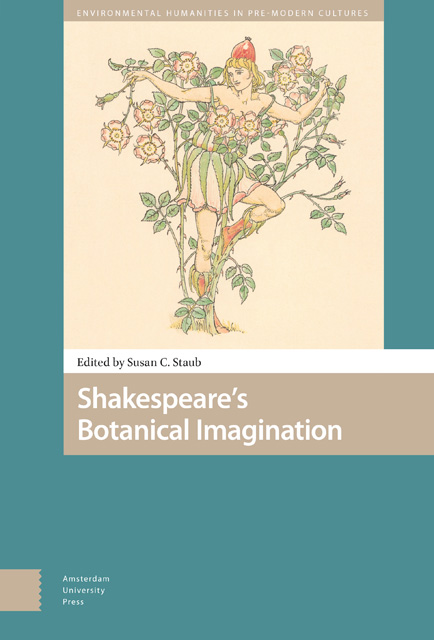Introduction
Published online by Cambridge University Press: 17 October 2023
Summary
Abstract
This introduction summarizes some of the different ways that plants are enmeshed in all aspects of human life in the early modern period and in Shakespeare’s works. It points to the many ways that plants in the period are vital and active, part of a network of meaning that belies our own sense of the word “vegetable.” These various interpretations of plants provide context for the essays gathered in this volume. Essays in this collection show the power plants have to interact with and affect humans; how the boundary between plant and human is often blurred; and how considering temporality in conjunction with plants forces a reconsideration both of time and of human life.
Keywords: vitalism, trans-corporeality, indistinction, critical plant studies, ecocriticism
In May 2015, botanist Mark Griffiths ignited a firestorm among Shakespeare scholars with his identification of one of the male figures on the 1597 title page of John Gerard’s Herball, or Generall Historie of Plantes as Shakespeare. Hailing it as the “literary discovery of the century,” the editor of Country Life, where Griffiths detailed his rationale for the identification, proclaimed the image “the only known and demonstrably authentic portrait of the world’s greatest writer made in his lifetime.” “This is Shakespeare in his pomp with a film star’s good looks, sharing the company of Lord Burghley, the most powerful man in the land. It changes a great deal of what we know about the Bard,” the editor crowed. Claiming to have “cracked the Tudor code,” Griffiths examined the elements of the image, in particular, the laurel on the man’s head, the snake’s head fritillary in his right hand and the ear of corn in his left, and the symbol on the plinth underneath the figure, to prove his claim. News of Griffiths’ “discovery” quickly spread across the world with headlines heralding the find: “‘True face of Shakespeare’ appears in botany book,” the BBC declared; “William Shakespeare: Newly-discovered image revealed,” asserted The Telegraph matter-of-factly.
- Type
- Chapter
- Information
- Shakespeare's Botanical Imagination , pp. 11 - 40Publisher: Amsterdam University PressPrint publication year: 2023



